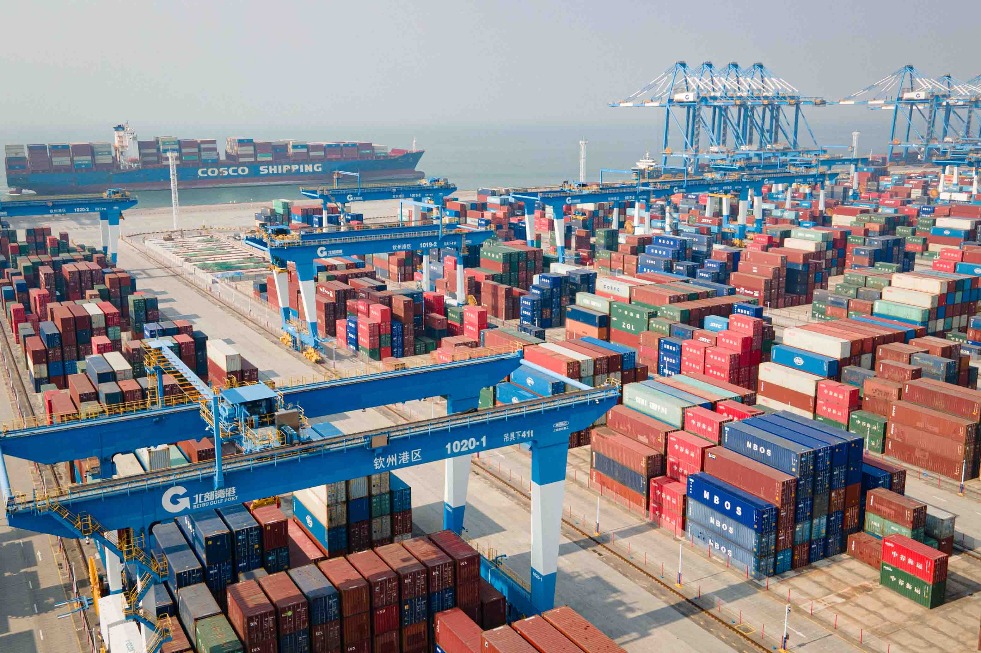Smart rollout of 5G tech key to promoting economic growth


More than 718,000 5G base stations had been built in China by the end of last year, accounting for about 70 percent of the world's total.
And the exploration of 5G integration is increasingly active, and telecom operators, equipment manufacturers, and leaders of different sectors have strengthened the connection between supply and demand, and the trend of multi-side collaborative advancement is accelerating.
Despite such a good start on 5G, its future development still faces problems and challenges.
First of all, China's industrial foundation still has shortcomings. There is heavy reliance on others for fundamental software and hardware like core components and mobile operating systems. This places constraints on the further innovation and development of 5G.
Second, 5G network construction still faces problems like the difficulty in selecting sites for base stations. The costs of network construction, operation and maintenance are higher than that of 4G networks.
Third, more efforts are needed to accelerate the maturing of 5G technologies to support industrial applications, and 5G technology itself still needs to evolve.
In practice, it is also necessary to explore the optimization of 5G technology for different application scenarios.
Fourth, 5G cross-industry fusion applications need to be strengthened. Problems such as unclear business models and cross-industry integration barriers still exist, and it will take time to achieve large-scale applications.
When promoting the construction of 5G networks, we adhere to a principle of moderately speeding up the rollout pace.
On the one hand, "moderately" refers to respecting the objective laws of maturity of 5G technology products. China is among the first batch of countries to commercialize 5G. There is no ready-made experience in technology, industry, construction and application. It takes time to explore and practice.
5G development should be viewed objectively and rationally, the development rhythm should be grasped, and the "degree "should be controlled. It is not advisable to waste resources due to rapid construction.
On the other hand, "speeding up the pace "means that network construction is the foundation of application development, and a good network is the key to commercial success.
Therefore, when promoting network development, we have believed that "it is better to wait for cars on the road than to let the cars wait for the road".
History has shown that killer applications such as social networking platform Weibo in the 3G era and short videos in the 4G era did not appear until two to three years later after the networks were commercialized.
At that time, the network coverage was relatively complete, creating good conditions for application innovation. At present, in the 5G era, it is necessary to appropriately speed up the pace of network construction and expand the scale of network coverage to promote the formation of a benign model of "building networks to promote use and widening use to promote network construction".
According to the principle of moderately speeding up the rollout pace, China's Ministry of Industry and Information Technology proposed the target of building 600,000 5G base stations this year. This is a plan put forward after scientific research and careful consideration, using good judgment, and has reasonable expectations.
In addition, it is necessary to continue to reduce 5G network construction and operating costs. Efforts are needed to carry out the green transformation of the network, and accelerate the application and promotion of advanced energy-saving technologies.
Meanwhile, it is also advisable to actively promote network sharing and inter-network roaming, further deepen the co-construction and sharing of telecom towers, indoor distribution systems, poles, pipelines and supporting facilities among telecom operators and guide them to create resource-intensive and efficient 5G networks.
At the same time, it is necessary to provide a better policy environment for 5G network construction.
As 5G is a high-tech industry, its own development will directly promote economic growth. At the same time, the combination of 5G and traditional industries will produce spillover effects, promote the improvement of production efficiency and the transformation of economic growth models, and add new momentum to economic development.
The huge promotion of 5G for economic development entails three benefits.
The first benefit is to stimulate investment. Commercial use of 5G will significantly promote the information and communications industry on a new growth track. 5G commercialization will drive telecom operators to enter a new cycle of investment in mobile communication networks.
Meanwhile, 5G will increase the investment demand for "new infrastructure". For instance, the superfast wireless technology has promoted the explosive growth of data traffic, driven the demand for data storage, processing, calculation and analysis, and set off an investment boom in new infrastructure such as data centers and cloud computing.
The second benefit is to stimulate consumption. 5G commercialization promotes the transformation and upgrading of user information consumption. It will encourage users to consume more online traffic.
Meanwhile, consumers will buy a large number of 5G-powered devices such as smartphones, and they are paying more attention to new consumer terminals such as smart wearable devices and smart internet of things products.
The third benefit is to change production methods and promote high-quality economic development.
Since the commercialization of 5G in China, converged applications of the wireless technology in traditional sectors have leapt from Zero to One.
The penetration of 5G into more industries will significantly improve production efficiency. This is mainly reflected in supporting the effective integration of production and management data, helping to achieve low-cost remote control, high-precision real-time detection of production, and improving the flexibility of production lines.
In the future, with the continuous innovation and in-depth development of 5G applications, the superfast wireless technology will play a greater role in promoting high-quality economic development and stimulating new kinetic energy.
Wang Zhiqin is the deputy head of the China Academy of Information and Communications Technology, a think tank affiliated with the Ministry of Industry and Information Technology. Wang is also the head of IMT-2020(5G) Promotion Group, a major platform jointly established by three ministries in China to promote research into 5G telecom technology.
The views don't necessarily reflect those of China Daily.




































